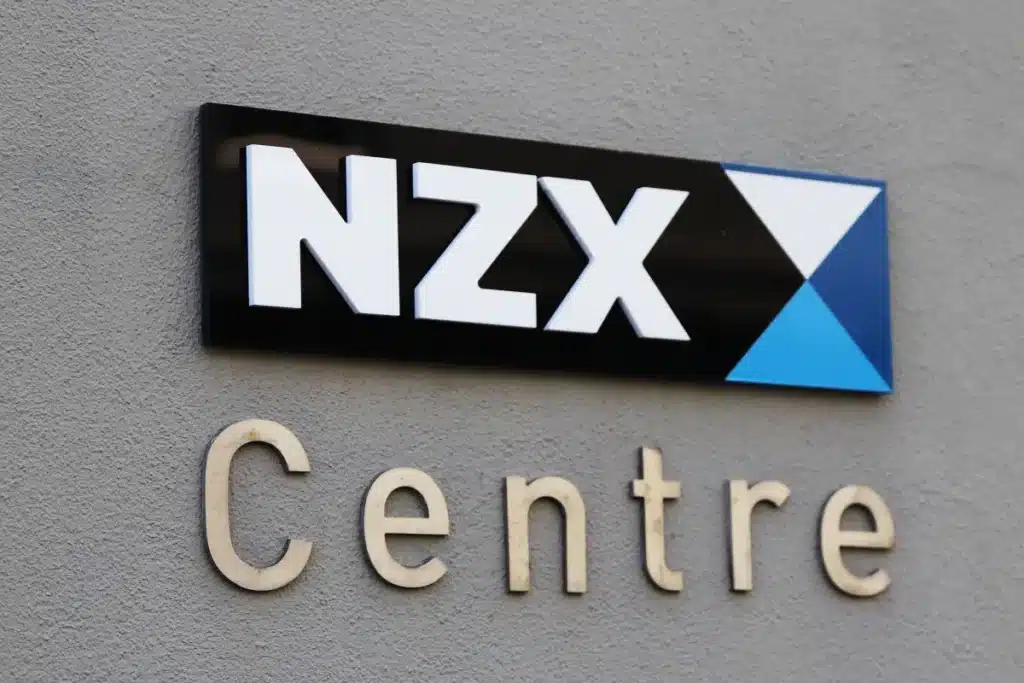Components and Market Capitalization of the NASDAQ Composite Index
The NASDAQ Composite Index is a broad-based index that encompasses a diverse range of companies from the high-tech sector. To better understand the index’s composition, let’s take a closer look at its components and their respective market capitalizations.
Understanding the index’s component breakdown and market capitalization distribution provides valuable insights into the areas of the tech sector that are driving the NASDAQ Composite’s performance and the relative influence of its largest players.
Tracking Stock Price Movements in the Tech Sector
The NASDAQ Composite Index serves as a barometer for the overall health and performance of the high-tech sector. By closely monitoring the index’s stock price movements, investors can gain valuable insights into the broader trends and sentiments shaping the tech industry.
In this section, we’ll explore the various tools and techniques used to track the NASDAQ Composite’s stock price movements, including real-time data, historical charts, and technical analysis. We’ll also discuss the importance of staying informed about the latest news, earnings reports, and market commentary related to the index’s constituent companies.
By developing a deep understanding of how the NASDAQ Composite’s stock prices fluctuate and the factors driving those movements, you’ll be better equipped to make informed investment decisions and capitalize on the opportunities presented by the tech sector.
Analyzing Market Trends in the Tech Industry
The tech industry is renowned for its dynamic and ever-evolving nature, with new technologies, business models, and market leaders constantly emerging. As an investor, it’s crucial to stay informed about the latest trends and developments shaping the sector to identify potential investment opportunities and mitigate risks.
In this section, we’ll dive into the key market trends that are currently defining the tech industry, such as the rise of cloud computing, the increasing importance of data and analytics, the growth of e-commerce and digital transformation, and the ongoing advancements in artificial intelligence and automation. We’ll explore how these trends are reflected in the composition and performance of the NASDAQ Composite Index, and discuss the implications for investors.
By understanding the driving forces behind the tech sector’s evolution, you’ll be better positioned to make informed investment decisions and align your portfolio with the most promising areas of growth.
The Role of the NASDAQ 100 in the Technology Sector
While the NASDAQ Composite Index is a broad-based index that encompasses a wide range of companies from the high-tech sector, the NASDAQ 100 index is a more focused and narrowly defined subset that represents the 100 largest non-financial companies listed on the NASDAQ Exchange.
The NASDAQ 100 is widely regarded as a bellwether for the tech industry, as it includes many of the sector’s most prominent and influential players. In this section, we’ll examine the role of the NASDAQ 100 within the broader technology landscape and explore how its performance and composition can provide valuable insights for investors.
We’ll discuss the key differences between the NASDAQ Composite and the NASDAQ 100, analyze the factors that drive the performance of the NASDAQ 100, and explore the investment strategies and opportunities associated with this more concentrated tech-focused index.
Building an Investment Portfolio in the Tech Industry
Investing in the tech sector through the NASDAQ Composite Index can be a strategic way to gain exposure to the high-growth potential of the industry. However, building a well-diversified investment portfolio requires careful consideration of various factors, including risk management, asset allocation, and market analysis.
In this section, we’ll provide guidance on how to construct a balanced investment portfolio that incorporates the NASDAQ Composite Index and other tech-related investments. We’ll discuss the benefits of diversification, the role of index funds and ETFs, and the importance of aligning your investment strategy with your financial goals and risk tolerance.
Additionally, we’ll explore the techniques for monitoring and managing your portfolio’s performance, including the use of market analysis, sector-specific research, and portfolio rebalancing. By following these principles, you’ll be better equipped to navigate the dynamic tech landscape and optimize your investment returns.
Managing Market Volatility in the NASDAQ Composite Index
The tech sector is known for its high levels of volatility, which can present both opportunities and challenges for investors. The NASDAQ Composite Index, as a reflection of the broader tech industry, is not immune to these fluctuations and can experience significant price swings in response to various market conditions.
In this section, we’ll delve into the strategies and techniques for managing market volatility within the context of the NASDAQ Composite Index. We’ll discuss the importance of diversification, risk management, and the use of hedging instruments to mitigate the impact of market downturns.
Additionally, we’ll explore the role of portfolio rebalancing, market analysis, and investment discipline in navigating the ups and downs of the tech sector. By understanding the drivers of volatility and employing effective risk management strategies, you’ll be better equipped to weather the storms and capitalize on the opportunities presented by the NASDAQ Composite Index.
Historical Data and Performance of the NASDAQ Composite Index
The NASDAQ Composite Index has a rich history that spans several decades, providing a wealth of data and insights for investors. In this section, we’ll examine the long-term performance of the index, analyzing its growth, market cycles, and the factors that have contributed to its success over time.
We’ll delve into the index’s historical data, including its all-time highs, its performance during bull and bear markets, and the impact of major events and economic conditions on its trajectory. By understanding the NASDAQ Composite’s historical context, you’ll gain a deeper appreciation for the index’s role in the tech sector and its potential for future growth.
Additionally, we’ll compare the NASDAQ Composite’s performance to other market indices, such as the S&P 500 and the Dow Jones Industrial Average, to provide a broader perspective on the tech sector’s relative performance and its place within the overall financial landscape.
Listing Requirements and Trading Hours on the NASDAQ Exchange
The NASDAQ Composite Index is closely tied to the NASDAQ Exchange, which serves as the primary marketplace for the index’s constituent companies. To fully comprehend the NASDAQ Composite, it’s essential to understand the listing requirements and trading hours of the NASDAQ Exchange.
In this section, we’ll explore the criteria and standards that companies must meet to be listed on the NASDAQ Exchange, including minimum market capitalization, liquidity, and financial reporting requirements. We’ll also discuss the exchange’s trading hours and the implications for investors, particularly those seeking to capitalize on the NASDAQ Composite’s performance.
By understanding the regulatory framework and operational details of the NASDAQ Exchange, you’ll be better equipped to navigate the intricacies of the NASDAQ Composite Index and make informed investment decisions.
Understanding Earnings Reports and Market Analysis in the Tech Sector
The tech sector is renowned for its rapid pace of change and innovation, which can have a significant impact on the performance of the NASDAQ Composite Index. To stay ahead of the curve, investors must closely monitor the earnings reports and market analysis related to the index’s constituent companies.
In this section, we’ll explore the importance of analyzing earnings reports, financial statements, and industry-specific research to gain a deeper understanding of the tech sector’s performance and the factors driving the NASDAQ Composite’s movements. We’ll discuss the key metrics and indicators that investors should focus on, such as revenue growth, profit margins, and market share, to assess the health and potential of the companies within the index.
Additionally, we’ll examine the role of market analysis and economic forecasts in shaping investment decisions related to the NASDAQ Composite. By staying informed about the latest trends, industry insights, and expert opinions, you’ll be better equipped to navigate the dynamic tech landscape and capitalize on the opportunities presented by the NASDAQ Composite Index.
Navigating a Bull or Bear Market in the Tech Industry
The tech sector is known for its cyclical nature, with periods of rapid growth (bull markets) and sudden declines (bear markets). As an investor in the NASDAQ Composite Index, it’s crucial to understand how to navigate these market cycles and adapt your investment strategy accordingly.
In this section, we’ll explore the characteristics and implications of bull and bear markets in the tech industry, and discuss the strategies and techniques for managing your investments during these periods of volatility. We’ll cover topics such as:
- Identifying the signs of a bull or bear market in the tech sector
- Adjusting your asset allocation and portfolio diversification
- Leveraging defensive investment strategies during market downturns
- Capitalizing on growth opportunities during bull markets
- Monitoring market indicators and economic conditions
- Maintaining a long-term perspective and disciplined investment approach
By understanding the nuances of bull and bear markets in the tech industry, you’ll be better equipped to make informed decisions and position your NASDAQ Composite investments for long-term success.
Reaching All-Time Highs in the NASDAQ Composite Index
The NASDAQ Composite Index has a history of reaching new all-time highs, reflecting the remarkable growth and innovation of the tech sector. These record-breaking moments can be both exciting and challenging for investors, as they often signal the potential for further upside, but also raise concerns about market valuations and sustainability.
In this section, we’ll explore the significance of the NASDAQ Composite reaching all-time highs, analyzing the factors that contribute to these milestones and the implications for investors. We’ll discuss the role of market sentiment, economic conditions, and industry-specific trends in driving the index’s performance to new heights.
Additionally, we’ll provide guidance on how to navigate the NASDAQ Composite during these periods of heightened optimism, including strategies for managing risk, identifying potential pullbacks, and positioning your portfolio for long-term growth. By understanding the dynamics of the NASDAQ Composite’s all-time highs, you’ll be better equipped to make informed investment decisions and capitalize on the opportunities presented by the tech sector’s continued evolution.
Overview of Listed Companies on the NASDAQ Exchange
The NASDAQ Composite Index is a reflection of the diverse range of companies that are listed on the NASDAQ Exchange. From tech giants to innovative startups, the exchange is home to a vast array of businesses that are shaping the future of the high-tech sector.
In this section, we’ll provide an overview of the types of companies that are listed on the NASDAQ Exchange and contribute to the composition of the NASDAQ Composite Index. We’ll explore the industry sectors, market capitalizations, and business models represented within the index, giving you a comprehensive understanding of the companies that drive its performance.
By familiarizing yourself with the NASDAQ Exchange’s listed companies, you’ll be better equipped to identify investment opportunities, understand the competitive landscape, and make informed decisions when building your portfolio in the tech sector.
Exploring Index Funds and ETFs in the Tech Sector
For investors seeking exposure to the NASDAQ Composite Index and the broader tech sector, index funds and exchange-traded funds (ETFs) can be a convenient and cost-effective solution. These investment vehicles provide a diversified, passively managed approach to investing in the tech industry.
In this section, we’ll delve into the world of NASDAQ Composite-tracking index funds and ETFs, exploring their benefits, risk profiles, and the various options available in the market. We’ll discuss the factors to consider when selecting the right index fund or ETF, such as expense ratios, tracking error, and the index’s underlying composition.
Additionally, we’ll examine the role of these investment vehicles in portfolio diversification and how they can be leveraged to gain exposure to the tech sector’s growth potential. By understanding the advantages and considerations of NASDAQ Composite-related index funds and ETFs, you’ll be better equipped to incorporate them into your investment strategy and capitalize on the opportunities presented by the tech industry.
Comparing Market Indices and Their Performance
While the NASDAQ Composite Index is a crucial barometer for the tech sector, it’s important to understand how it performs in relation to other market indices. By comparing the NASDAQ Composite’s performance to that of broader market indices, such as the S&P 500 and the Dow Jones Industrial Average, you can gain valuable insights into the relative strength and positioning of the tech industry within the overall financial landscape.
In this section, we’ll analyze the historical performance of the NASDAQ Composite Index, the S&P 500, and the Dow Jones Industrial Average, examining factors such as:
- Long-term growth and returns
- Volatility and risk profiles
- Sector and industry weightings
- Correlation and diversification benefits
By understanding the nuances and distinctions between these market indices, you’ll be better equipped to make informed investment decisions, diversify your portfolio, and capitalize on the unique opportunities presented by the NASDAQ Composite Index and the tech sector.
Maximizing Investment Opportunities in the NASDAQ Composite Index
As we’ve explored throughout this guide, the NASDAQ Composite Index offers a wealth of investment opportunities for those seeking exposure to the dynamic high-tech sector. By leveraging the insights and strategies outlined in this article, you can position yourself to maximize the potential of your NASDAQ Composite investments. To help you get started, I’ve compiled a comprehensive checklist of key steps you can take to optimize your NASDAQ Composite investment strategy:
- Develop a deep understanding of the high-tech sector and the factors driving its growth
- Analyze the composition, market capitalization, and performance trends of the NASDAQ Composite Index to identify the most promising investment opportunities
- Diversify your portfolio by incorporating NASDAQ Composite-tracking index funds or ETFs
- Monitor market trends, earnings reports, and industry analysis to stay informed about the tech sector
- Employ risk management strategies to navigate market volatility and protect your investments
- Maintain a long-term perspective and disciplined investment approach to capitalize on the NASDAQ Composite’s growth potential
- Regularly review and rebalance your portfolio to ensure it aligns with your financial goals and risk tolerance
By following these steps, you’ll be well on your way to maximizing the investment opportunities presented by the NASDAQ Composite Index and the dynamic high-tech sector it represents. Remember, investing in the tech industry requires diligence, adaptability, and a focus on the long-term, but the potential rewards can be significant for those who are willing to put in the work.
As you embark on your NASDAQ Composite investment journey, I encourage you to stay curious, stay informed, and stay committed to your financial goals. The tech sector is constantly evolving, and the NASDAQ Composite Index is a powerful tool for navigating this exciting and rapidly changing landscape.










































